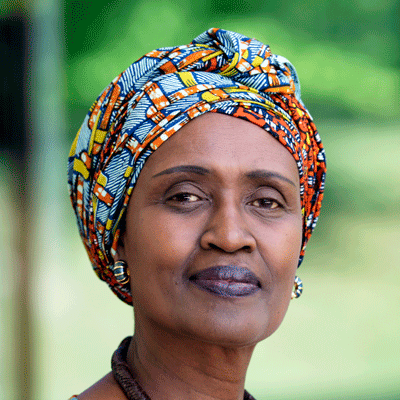
Winnie Byanyima
Executive Director, UNAIDS and Under-Secretary-General, the United Nations
New HIV prevention methods could save people, but high prices are keeping them out of reach to those who need them most.
This year has been a breakthrough year for HIV science: a new, long-acting medicine has been proven effective in preventing HIV. It is approved for use in the US and Zimbabwe with other regulatory agencies across the world expected to follow suit.
HIV injectables
The medicine can be taken as an injection once every two months rather than taking a pill a day. This kind of injectable medicine is likely to become more widely available for HIV treatment in the future.
It could have the potential to save thousands at most risk of HIV. But there are huge obstacles in getting these medicines into the hands of people who need them — namely monopolies, high prices and regulatory bottlenecks.
Between 1997 and 2005, around 12 million people
in African countries died of AIDS because
the medicines were too expensive.
Another awakening
It is a stark reminder of when the first HIV treatments became available. Between 1997 and 2005, around 12 million people in African countries died of AIDS because the medicines were too expensive. At USD 15,000 per person annually, only rich countries could afford them, leaving people in the countries most affected to die.
It wasn’t until activists and governments from developing countries raised their voices that global mindsets shifted, and generic producers were able to supply the market with more affordable and quality-assured antiretroviral medicines. This movement saved millions of lives and continues to do so for the 28.7 million people with HIV who are alive and well today because of access to these medicines. However, almost 10 million people are still waiting for treatment.
The price of treatment and daily pills have decreased, but this is not yet the case for the HIV prevention injectables which — at USD 22,000 per person annually — are out of reach for people in need, even in high-income countries.
Maximising tools
In 2022, we are facing the same obstacles. UNAIDS’ latest report ‘In Danger’ showed that the world is drastically off-track in stopping new HIV infections with 1.5 million new infections in 2021 alone. The target is to reduce new HIV infections to under 370,000 by 2025.
We should make full use of the biomedical tools that are becoming available. They must be 1) lower in price, 2) generically produced, 3) quality assured and 4) financed by funders, and 5) governments and communities must quickly implement policies with equitable and efficient delivery systems that will enable widespread access.
The theme of this year’s World AIDS Day is ‘Equalize.’ By sharing technologies to enable access to the best HIV products and services, eliminating stigma and reforming policies to tackle exclusion faced by marginalised populations — we can stop new HIV infections.

